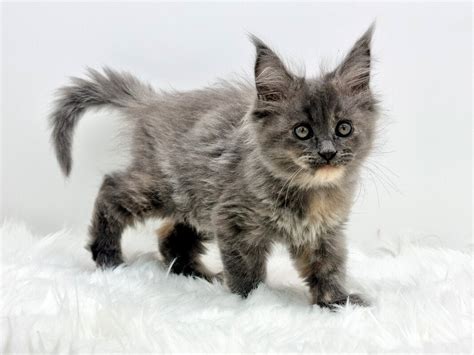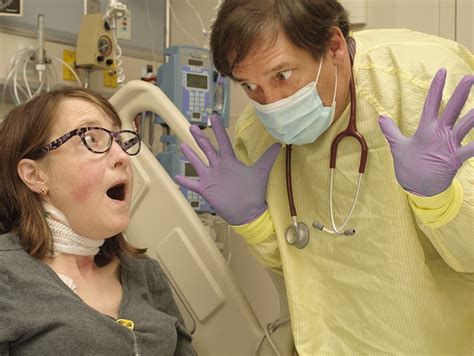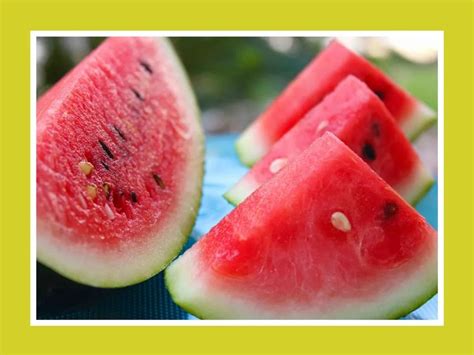
A rare blue tortie Maine Coon is captivating audiences worldwide with its unique coloring and charming personality, quickly becoming an internet sensation.
A Maine Coon cat with an exceptionally rare blue tortie coat is the latest feline to capture hearts online. Videos and photos of the cat, whose name and owner were not disclosed in the original report, have gone viral, showcasing the striking blend of blue and tortoiseshell patterns that define this unusual coloration. Experts note that the blue tortie coloring is a genetic anomaly, making these cats exceptionally uncommon and highly prized by breeders and enthusiasts.
The cat’s popularity underscores the fascination with rare animal coat colors and the ongoing appeal of the Maine Coon breed, known for its large size, gentle temperament, and distinctive appearance. Social media users have expressed their admiration for the cat’s beauty, with many commenting on the rarity and uniqueness of its coat.
The Rarity of the Blue Tortie Maine Coon
The term “tortie” or tortoiseshell refers to a coat pattern characterized by patches of red and black, or their dilute equivalents, cream and blue. The genetic mechanism behind this coloration is sex-linked, residing on the X chromosome. Typically, female cats have two X chromosomes (XX), allowing for the expression of both black and red pigments, resulting in the tortoiseshell pattern. Male cats, with their XY chromosome pairing, usually express only one of these colors, resulting in either a solid black or solid red coat.
However, in rare instances, male cats can inherit an extra X chromosome (XXY), a genetic condition known as Klinefelter’s syndrome in humans. This allows for the expression of both black and red pigments, resulting in a male tortoiseshell or calico cat. These males are almost always sterile.
The “blue” in blue tortie refers to a dilution gene that modifies black pigment, turning it into a soft, muted blue-gray. This dilution gene affects both the black and red pigments in a tortie cat, transforming black to blue and red to cream. The combination of the dilute blue and cream patches creates the blue tortie pattern, an already rare occurrence made even more exceptional in the Maine Coon breed.
Maine Coons are one of the largest domestic cat breeds, known for their long, flowing fur, bushy tails, and tufted ears. Their size and striking features, combined with the rarity of the blue tortie coloration, contribute to the cat’s exceptional appeal. “It’s rare to see a Maine Coon with this particular color combination,” says Dr. Emily Carter, a feline geneticist. “The genetics have to align perfectly, which is why it’s so special.”
The Allure of Maine Coons
Maine Coons originated in the state of Maine and are known as “gentle giants” because of their large size and amiable personality. They are highly intelligent, trainable, and get along well with children and other pets, making them popular family companions. The breed’s history is shrouded in folklore, with stories suggesting they are the result of crosses between domestic cats and raccoons, although this is genetically impossible.
Their thick fur provides insulation against harsh winters, and their large paws act like snowshoes, allowing them to navigate snowy terrain with ease. Maine Coons are also known for their distinctive vocalizations, often described as a combination of purrs, chirps, and trills.
The breed’s popularity has surged in recent years, fueled by social media platforms where their majestic appearance and playful antics are widely shared. Breeders have worked to maintain the breed’s distinctive traits, including its large size, shaggy coat, and gentle temperament. The blue tortie coloration, however, remains a rare and highly sought-after trait.
Social Media’s Role in Viral Sensations
The viral success of the blue tortie Maine Coon highlights the power of social media to elevate ordinary animals to celebrity status. Platforms like Instagram, TikTok, and YouTube have become breeding grounds for animal influencers, with millions of users following their daily lives and adventures. The visual nature of these platforms makes them particularly well-suited for showcasing animals with unique appearances or endearing personalities.
In the case of the blue tortie Maine Coon, its striking coloration and the inherent appeal of cats have combined to create a viral sensation. The cat’s images and videos have been shared across multiple platforms, garnering millions of views and sparking conversations about feline genetics and breed characteristics. The online attention has also driven increased interest in Maine Coons and rare cat coat colors.
The Genetic Basis of Coat Color in Cats
Understanding the genetics of coat color in cats requires delving into the complex interplay of genes and their effects on pigment production and distribution. The primary pigment responsible for coat color is melanin, which comes in two forms: eumelanin (black or brown) and phaeomelanin (red or orange). The specific type and amount of melanin produced are determined by various genes, including the agouti gene (which controls the distribution of pigment along the hair shaft), the extension gene (which influences the production of eumelanin), and the dilute gene (which modifies the intensity of the pigment).
The sex-linked nature of the red/black pigment gene is crucial in understanding tortoiseshell and calico patterns. As mentioned earlier, the gene responsible for producing red or black pigment resides on the X chromosome. Female cats have two X chromosomes, allowing them to express either red or black pigment, or a combination of both, resulting in the tortoiseshell pattern. Male cats, with their XY chromosome pairing, typically express only one of these colors.
The dilute gene further complicates the picture by modifying the intensity of the pigments. When the dilute gene is present, black pigment is diluted to blue-gray, and red pigment is diluted to cream. This results in a range of diluted coat colors, including blue, cream, lilac, and fawn.
The combination of these genes creates a vast array of coat colors and patterns in cats, making each cat a unique work of art. The blue tortie pattern, with its combination of dilute black and red pigments, is a testament to the complexity and beauty of feline genetics.
Ethical Considerations in Breeding
The increasing demand for rare and unusual coat colors in cats raises ethical concerns about breeding practices. While responsible breeders prioritize the health and well-being of their cats, some may focus on producing cats with specific coat colors at the expense of other important traits, such as temperament and overall health.
Overbreeding can lead to genetic problems and health issues, particularly in breeds with limited gene pools. It is important for prospective cat owners to research breeders thoroughly and choose those who prioritize health and temperament over appearance. Responsible breeders conduct genetic testing to screen for inherited diseases and avoid breeding cats with known health problems.
The popularity of rare coat colors can also lead to increased instances of cat theft and fraud. Unscrupulous individuals may try to sell common cats as rare breeds or steal valuable cats for resale. It is essential for cat owners to take precautions to protect their pets and report any suspicious activity to the authorities.
The Future of Feline Genetics
Advances in feline genetics are providing new insights into the mechanisms that control coat color, pattern, and other traits. Researchers are using genetic testing to identify genes associated with inherited diseases and develop strategies for preventing and treating these conditions.
Genome sequencing is also revealing the evolutionary history of cats and their relationships to other species. This information can be used to improve breeding practices and conserve endangered cat populations.
The study of feline genetics is a rapidly evolving field with the potential to transform our understanding of these fascinating animals. As our knowledge of feline genetics grows, we can expect to see even more advancements in the health, welfare, and conservation of cats.
The Enduring Appeal of Cats
Cats have been companions to humans for thousands of years, and their popularity shows no signs of waning. Their independence, intelligence, and affectionate nature make them ideal pets for people of all ages and lifestyles.
Cats provide companionship, reduce stress, and offer unconditional love. Studies have shown that owning a cat can lower blood pressure, reduce the risk of heart disease, and improve overall mental health.
The enduring appeal of cats is a testament to their unique qualities and the special bond they share with humans. Whether they are viral sensations or beloved family pets, cats continue to enrich our lives in countless ways. The blue tortie Maine Coon is just the latest example of the magic and mystery that cats bring to the world.
The Importance of Responsible Pet Ownership
The popularity of the blue tortie Maine Coon serves as a reminder of the importance of responsible pet ownership. Owning a pet is a significant commitment that requires time, money, and dedication. Before bringing a pet into your home, it is important to consider your lifestyle, financial resources, and ability to provide for the animal’s needs.
Responsible pet owners provide their pets with proper nutrition, exercise, and veterinary care. They also ensure that their pets are properly socialized and trained. It is also crucial to understand the specific needs of a breed before acquiring a cat, as breeds such as the Maine Coon require specific grooming and dietary considerations. Furthermore, responsible pet owners are aware of local animal welfare laws and regulations and comply with these laws.
Adopting a pet from a shelter or rescue organization is a responsible way to acquire a companion animal. Shelters and rescue organizations are filled with deserving animals who are waiting for loving homes. By adopting a pet, you can save a life and provide a deserving animal with a second chance.
The viral success of the blue tortie Maine Coon highlights the joy and companionship that pets can bring to our lives. By embracing responsible pet ownership, we can ensure that all animals receive the care and love they deserve.
Expanded Information on Maine Coon Breed Characteristics
Maine Coons are characterized by their distinctive physical attributes and amiable temperaments. These features contribute significantly to their popularity and appeal as family pets.
-
Size and Build: Maine Coons are one of the largest domestic cat breeds. Adult males typically weigh between 13 to 18 pounds, while females weigh between 8 to 12 pounds. They possess a long, muscular body and a broad chest. Their substantial size contributes to their “gentle giant” reputation.
-
Coat and Color: Maine Coons have a long, shaggy coat that is water-resistant. The coat consists of a dense undercoat and a silky topcoat. This double coat provides insulation against harsh weather conditions. While they come in various colors and patterns, the brown tabby is the most common. However, the blue tortie, as highlighted in the news, is among the rarest.
-
Head and Face: They have a distinctive square-shaped muzzle and high cheekbones. Their ears are large and pointed, often adorned with tufts of fur at the tips, known as “lynx tips.” Their eyes are large, expressive, and can be green, gold, or copper.
-
Tail: Their tail is long, bushy, and often as long as their body. The tail helps them maintain balance and provides warmth during cold weather.
-
Temperament: Maine Coons are known for their gentle, friendly, and playful nature. They are intelligent, trainable, and enjoy interacting with their human companions. They are also known for being good with children and other pets. They are often described as “dog-like” in their behavior due to their loyalty and trainability.
-
Vocalizations: Maine Coons have a distinctive vocalization that is a combination of purrs, chirps, and trills. They are not overly vocal but will communicate with their owners when they want attention or need something.
-
Health: While generally healthy, Maine Coons are prone to certain genetic health issues, including hypertrophic cardiomyopathy (HCM), hip dysplasia, and spinal muscular atrophy (SMA). Responsible breeders conduct genetic testing to screen for these conditions and avoid breeding cats with known health problems.
The Role of Cat Shows and Breed Standards
Cat shows are events where breeders and cat enthusiasts gather to showcase their cats and compete for awards. These shows play a vital role in preserving breed standards and promoting responsible breeding practices.
Breed standards are detailed descriptions of the ideal characteristics of a particular breed. These standards cover everything from physical attributes to temperament. Judges at cat shows use these standards to evaluate the cats and determine which ones best represent the breed.
Cat shows also provide a platform for breeders to network and share information about breeding practices, health issues, and genetic testing. These events help to ensure that breeders are following ethical and responsible breeding practices.
Organizations such as the Cat Fanciers’ Association (CFA) and The International Cat Association (TICA) set the standards for breeds and oversee cat shows. These organizations also provide resources and information for breeders and cat owners.
The Economic Impact of Viral Cat Sensations
The viral success of cats like the blue tortie Maine Coon can have a significant economic impact. The increased attention to the breed can lead to a surge in demand for Maine Coon kittens, driving up prices and benefiting breeders.
The popularity of viral cat videos and images can also generate revenue for social media platforms and content creators. Companies may also seek to partner with popular cat influencers to promote their products and services.
The economic impact of viral cat sensations extends beyond the cat breeding industry. It can also benefit businesses that sell cat-related products and services, such as pet food, toys, and veterinary care.
Conclusion: The Enduring Mystery and Fascination with Cats
The captivating story of the rare blue tortie Maine Coon serves as a reminder of the enduring mystery and fascination that cats hold for humans. From their elegant movements to their independent spirits, cats have captivated our hearts and minds for centuries.
The genetics of coat color, breed characteristics, and viral fame are all elements of the larger story of our relationship with these unique creatures. As we continue to learn more about cats, their genetics, and their behavior, our appreciation for these remarkable animals will only grow deeper.
The tale of the blue tortie Maine Coon is a testament to the beauty, rarity, and the captivating power of the feline world. It underscores the importance of responsible breeding practices, ethical pet ownership, and the celebration of the unique qualities that make each cat a treasure.
Frequently Asked Questions (FAQ)
1. What makes a blue tortie Maine Coon so rare?
The blue tortie coloring is a combination of the tortie (tortoiseshell) pattern and the dilute gene. The tortie pattern itself is sex-linked and almost exclusively found in female cats, resulting from the expression of both black and red genes (or their diluted forms) on the X chromosomes. The “blue” refers to the dilution gene, which dilutes black to blue-gray and red to cream. The combination of these genetic factors in a Maine Coon, a breed already known for specific traits, makes the blue tortie coloration exceptionally rare. “It’s rare to see a Maine Coon with this particular color combination,” says Dr. Emily Carter, a feline geneticist. “The genetics have to align perfectly, which is why it’s so special.” Male tortie cats are extremely rare because they require an extra X chromosome (XXY), a genetic anomaly that usually renders them sterile.
2. What are the typical characteristics of a Maine Coon cat?
Maine Coons are known for their large size, long shaggy coat, bushy tail, and tufted ears. They are often referred to as “gentle giants” due to their friendly and docile temperament. They are intelligent, trainable, and get along well with children and other pets. The breed originated in Maine and is well-adapted to cold climates, with a water-resistant coat and large paws that act like snowshoes. Maine Coons are also known for their distinctive vocalizations, which are a combination of purrs, chirps, and trills.
3. How does social media contribute to the popularity of rare cat breeds?
Social media platforms like Instagram, TikTok, and YouTube provide a platform for showcasing animals with unique appearances or endearing personalities, leading to viral sensations. The visual nature of these platforms makes them well-suited for highlighting rare coat colors and breed characteristics, driving increased interest and demand. The online attention can also elevate individual animals to celebrity status, generating revenue for social media platforms and content creators. The viral success of the blue tortie Maine Coon demonstrates the power of social media to amplify the appeal of rare animal breeds.
4. What are the ethical considerations when breeding cats for rare coat colors?
The increasing demand for rare coat colors raises ethical concerns about prioritizing appearance over health and temperament. Overbreeding can lead to genetic problems and health issues, particularly in breeds with limited gene pools. Responsible breeders conduct genetic testing to screen for inherited diseases and avoid breeding cats with known health problems. It is important for prospective cat owners to research breeders thoroughly and choose those who prioritize health and temperament over appearance. The pursuit of rare coat colors should not come at the expense of the well-being of the animals.
5. What is the best way to acquire a Maine Coon cat, especially one with a rare color?
The best way to acquire a Maine Coon cat is through a reputable breeder who prioritizes health and temperament over appearance. Research breeders thoroughly and ask about their breeding practices, genetic testing, and health guarantees. Visit the breeder’s facility to observe the cats and kittens in their environment. Be wary of breeders who focus solely on producing cats with rare coat colors and offer limited information about health and temperament. Consider adopting a Maine Coon mix from a shelter or rescue organization, as this can be a more ethical and affordable option. While finding a blue tortie may be difficult due to its rarity, a responsible breeder will be transparent about the genetic possibilities and health of their cats.









